LED technology advantages in C9 format
LED C9 bulbs use solid‑state diodes instead of filaments, delivering high brightness at a fraction of the power. They run cool to the touch, reducing fire risk on dry foliage and gutters, and they’re far more durable—polycarbonate or acrylic lenses resist shattering and UV yellowing better than glass. Their low amperage draw enables longer end‑to‑end runs and larger displays on a single circuit.
Modern LED C9s offer full‑wave rectification for flicker‑free viewing, instant-on performance in cold weather, and consistent color across strings.
Optically, faceted lenses create a classic sparkle while smooth lenses provide a crisp, modern glow. You can choose retrofit bulbs for existing E17 cords or sealed, pre‑lamped strings for faster setup and improved weather sealing. Altogether, LEDs provide superior reliability, safer operation, and more design flexibility than incandescent C9s.
Energy efficiency comparisons
Traditional incandescent C9 bulbs are typically about 7 watts each. LED C9s commonly draw 0.5–1 watt per bulb. For a 100‑bulb display, that’s roughly 700 watts (incandescent) versus 50–100 watts (LED).
Example: Run the lights 6 hours per night for 45 nights (270 hours). Energy use per 100 bulbs:
– Incandescent: 700 W × 270 h = 189 kWh
– LED (60 W total): 60 W × 270 h = 16.2 kWh
At $0.15/kWh, that’s about $28.35 vs. $2.43—saving ~$26 per season per 100 bulbs.
Lower current draw also expands design options. 100 incandescent C9s at 700 W pull ~5.8 A; you’ll quickly max out a 15 A circuit. An equivalent LED set (≈0.5 A) allows many more strings to be safely connected end‑to‑end, simplifying layouts and reducing the need for additional extension cords or dedicated circuits.
Color options and customization
LED C9s come in a vast palette: classic reds, greens, blues, ambers, and pure whites, plus warm whites (≈2200–2700K) for a vintage glow, neutral whites (≈3000–3500K), and cool whites (≈5000K) for an icy look. You’ll find clear, faceted, opaque “ceramic,” and smooth lenses to dial in the sparkle and diffusion you prefer.
Pro tip: keep color temperatures consistent across warm/cool whites to avoid mismatched tones. Mix solids and multi‑color sections to highlight rooflines, wreaths, and trees with intentional contrast.
Long-term cost savings analysis
LED C9s deliver savings through energy efficiency and longevity. While a quality LED retrofit bulb may cost more upfront than an incandescent, it uses about 85–95% less power and is typically rated for 20,000–50,000 hours. Incandescent C9s often last a fraction of that, meaning frequent replacements.
Illustrative 5‑season view (per 100 bulbs, 270 hours/season, $0.15/kWh):
– Energy: Incandescent ≈ $28.35/season vs. LED ≈ $2.43/season → ≈ $129 saved over 5 seasons.
– Bulb replacements: Incandescents may need multiple bulbs replaced each season; LEDs often run many seasons with minimal failures—reducing both material and ladder time.
Add lower extension‑cord needs and fewer circuits due to low current draw, and total ownership costs drop further. Depending on local rates and product choice, simple payback for upgrading to LED C9s typically falls within 1–3 seasons, with larger displays saving hundreds of dollars over their lifespan.
Specialty C9 Bulb Varieties
Multi-color and color-changing options
C9 bulbs now go beyond classic red/green/blue mixes. You’ll find static multi-color sets (each bulb a fixed color) and true color-changing bulbs that cycle through hues. Most retrofit color-changing C9s have an E17 base and a tiny built‑in controller that runs preset modes like slow fade, jump, or white‑only. Because the controller is inside each bulb, patterns usually won’t synchronize across a whole run unless you use a dedicated system.
Control options range from bulbs that auto-cycle when powered on, to versions with a push-button, RF remote, or app. Check whether a bulb is dimmable—many effect LEDs are not and may flicker on traditional dimmers. For consistent color and brightness, stick to the same brand and production run.
Outdoor-rated polycarbonate lenses handle winter weather well.
Twinkle and flash effect bulbs
Twinkle and flash C9 bulbs add motion and sparkle without a full lighting controller. “Twinkle” bulbs produce a gentle, random on/off pattern that creates a shimmering look across rooflines and trees. “Flash” or “strobe” bulbs emit a brighter, quicker burst that’s more dramatic and best used sparingly for accents.
Incandescent twinkle bulbs rely on a tiny thermal flasher; LED versions use an internal IC to regulate the blink rate. Because the electronics are in each bulb, effects typically aren’t synchronized between sockets.
For pleasing results, mix twinkle bulbs with steady-on bulbs (for example, 10–25% twinkle) to avoid visual overload. Choose wet-rated, cold-weather-tested models for reliable outdoor performance.
Faceted and smooth bulb finishes
C9 bulbs typically come in faceted (prismatic) and smooth finishes, each shaping how light appears. Faceted lenses scatter and diffuse light, reducing glare and “hot spots” while creating a jewel-like sparkle that reads well from a distance. They can make colors look richer and help multi-color displays blend more evenly across a roofline.
Smooth lenses deliver a glass-like appearance and a slightly crisper, brighter point of light. They’re great when you want a clean, classic look or well-defined reflections in windows and ornaments. In photos and videos, smooth bulbs can appear a touch brighter, while faceted bulbs feel fuller and more textured.
For durability, look for polycarbonate lenses with UV inhibitors to resist yellowing and cracking. If daytime curb appeal matters, faceted bulbs often “pop” more in sunlight.
